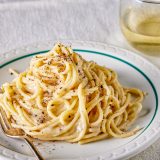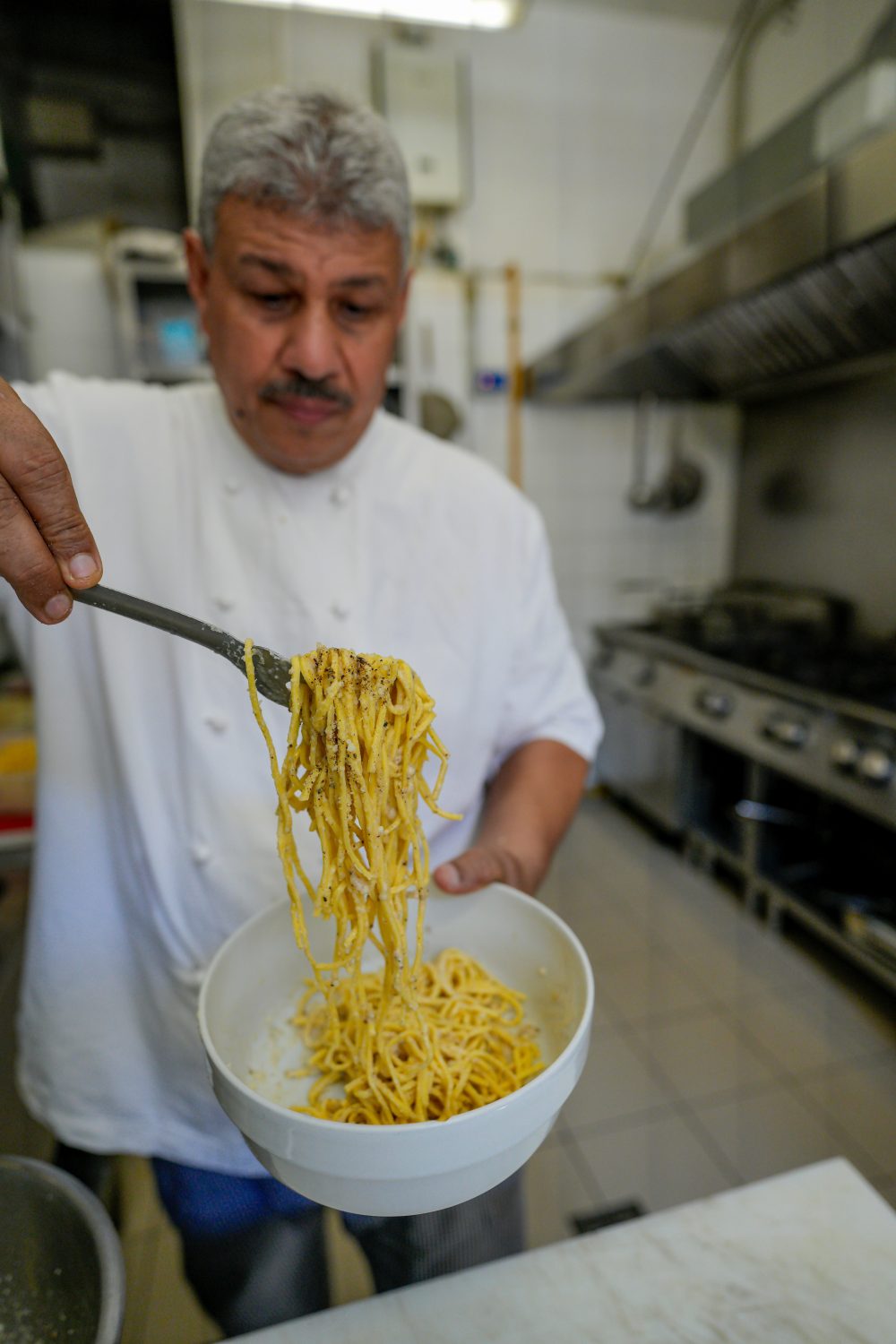
I arrived in Rome early one Wednesday last July and soon encountered the biggest culinary mystery of my career, cacio e pepe.
My first take was that a simple three-ingredient pasta dish is no mystery. But after consuming a half-dozen variations, it became clear that the simplest recipes are often the most difficult. The cheese needs to be melted fully, without bumpy nibs like flotsam. Second, the sauce should neither be dense like Alfredo nor should it be a mere whitewash of pecorino. Third, it should not inspire a race to shove it down the gullet before it congeals and turn gluey as it cools. Finally, the pasta, the cheese and the pepper need to forge a culinary harmony that, when perfected, makes this one of Italy’s greatest dishes.
Yotvata
After checking in to the Hotel Mozart off of Via Corso (the bathroom was so small I could barely open the shower door without stepping onto the toilet seat), I grabbed an Uber to Yotvata in the old Jewish neighborhood, based on a recommendation from Leah Koenig, author of “Portico.” They specialize in carciofi alla giudia (Jewish-style fried artichokes), which were the best in Rome—light as a feather, suggesting the world’s thinnest potato chips. I then ordered the cacio e pepe.
The sauce was rich—perhaps a bit too rich and abundant. The waiter, Michael Melek, was kind enough to share the recipe: Cook the pasta, add it wet to a skillet with butter, and then add the pecorino Romano to the pan with the pepper. No extra pasta cooking water was used. The result was on the heavy side, although delicious, but the use of butter was an outlier.
Flavio al Velavevodetto
Next up was a restaurant, Flavio al Velavevodetto, where I enjoyed a private cooking lesson with Flavio de Maio, the chef/founder. He used an immersion blender to make a thick paste of pecorino, pepper and water—much like Play-Doh—which was used to turn out endless portions of cacio e pepe with little last-minute effort. (He keeps a large batch of the paste on hand.) He cooked the pasta, added it wet to a bowl along with a couple of spoonfuls of the cheese paste, tossed the pasta, and then added a bit of hot pasta water at the end in small increments to get just the right texture. This produced a very good result, less rich than Yotvata, but his method is best suited to a working restaurant, not a home kitchen.
Colline Emiliane
At Colline Emiliane, Massimo Scortichini cooks food from Emilia, including fresh pasta made daily. The restaurant is famous for hosting Federico Fellini and Michelangelo Antonioni back in the day and for framed illustrations drawn by Fellini, the most famous being a frenetic naked woman running amok with a butterfly net. His cacio e pepe was high-end: He uses three types of peppercorns—black, red and pink—and also three different types of pecorino, some young and some well aged. (At Rome’s Trionfale market, I discovered pecorino is not one thing but many, depending on aging and terroir—nobody in Rome buys “pecorino” per se; instead, they ask for a specific type.) Scortichini also did something unusual: He cooked a small amount of garlic in a skillet with EVOO. In a large bowl, he whisked together a sauce with the cheese and pepper using hot pasta cooking water as a base. Then he tossed in the wet cooked pasta and finished the dish in the skillet with the oil-garlic mixture. Delicious.
Antico Falcone
The next day for lunch, I went to Antico Falcone, where the food is spectacular (I had enjoyed a bang-up lunch there years before). The Egyptian chef, Mimmo Galal, has his own cacio e pepe method, which includes two parts Parmesan to one part pecorino. Using hot pasta water, he whisks the sauce in a bowl with the pepper and then adds the wet cooked pasta, tossing vigorously and then adding additional water or cheese as needed.
The good news is that I get paid sufficiently to subject myself to plate after plate of cacio e pepe; the bad news is that I was no closer to a final recipe. But I did come away with two thoughts. First, the pasta cooking water was the key fourth ingredient in this recipe, helping to create a smooth sauce, binding it to the pasta. Second, I was concerned that local Roman ingredients might be critical to great cacio e pepe.
Back at Milk Street, we tried the recipes from Rome with mixed success. Since we knew that the starch content of the pasta cooking water was key, we kept reducing the amount, finally settling on just 4½ cups. This did provide starchy cooking water (although some additional water is added during cooking). Next, we decided to use a skillet, not a stockpot. With so little water, the pasta and the sauce could be made together, plus the skillet offers more control and access than a deeper saucepan or pot. (A nonstick skillet is preferable, since cheese will not stick to the surface, although a regular stainless steel pan delivers good results.) So far, so good.
But we hit a snag when we tried different brands of pasta; some produced a creamy, starchy sauce and others did not. Was it possible that the brand of pasta makes a big difference, that some brands release more starch than others? Pasta is made up of starch and protein; the former gelatinizes, and the latter forms an insoluble rigid structure during cooking. Higher-protein pastas (the more expensive brands) do a better job of forming a compact, netlike structure, which better traps starch, resulting in less starch leached into the cooking water.
The problem was that our tests determined that the more expensive pastas released more starch than cheaper supermarket brands. To confirm our suspicions about starch release, we tested a high-quality pasta brand, DeCecco, against a cheaper brand, Barilla. They were cooked in the same amount of water, and then we used a dilution of iodine to measure starch content in the resulting cooking water. The iodine turns the water blue in the presence of starch. And indeed, DeCecco showed a deeper blue color than Barilla. That confirmed that better pastas leach out more starch, contrary to what the science says.
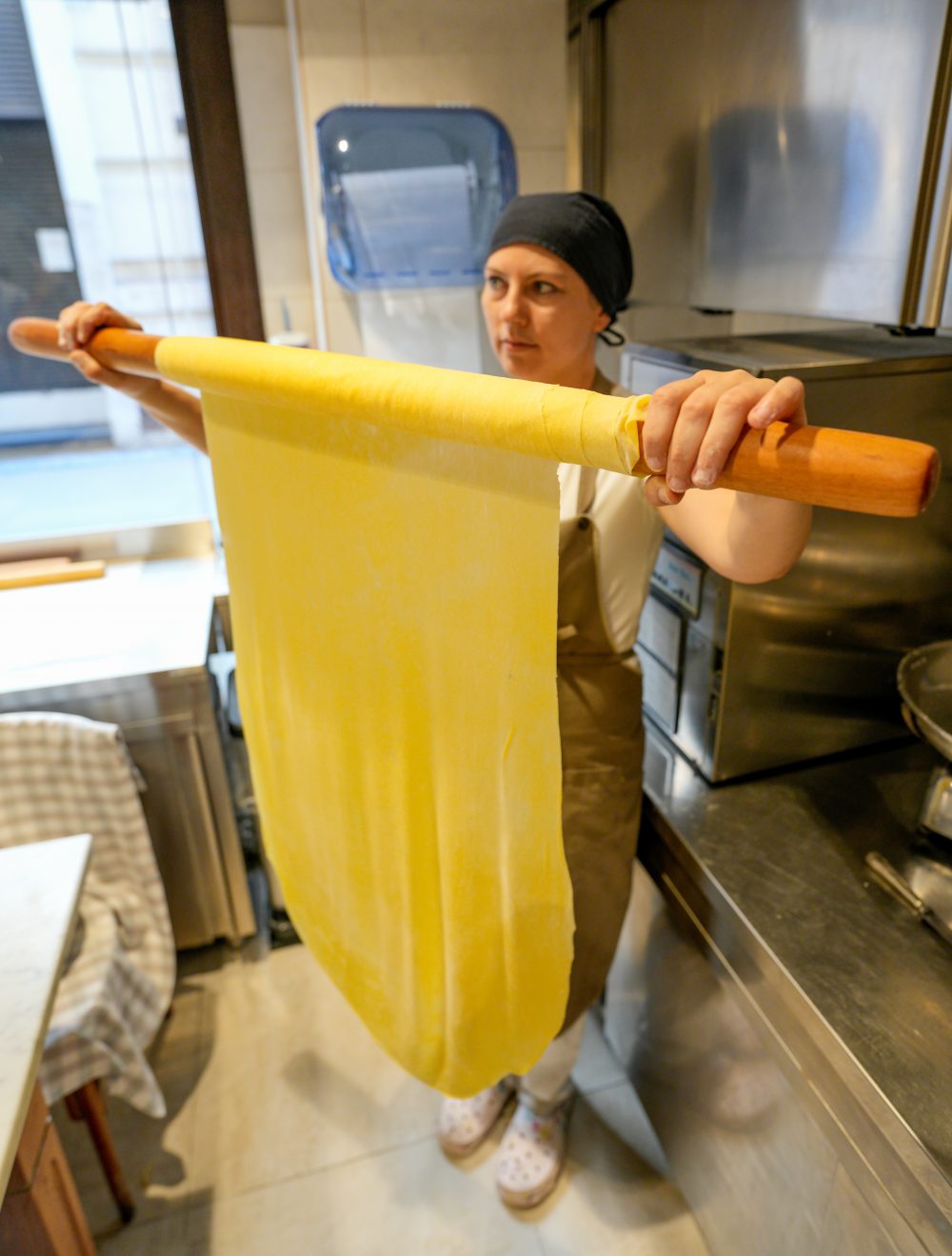
One detail we noticed in our experiments is that expensive pastas have a rougher outer surface than the cheaper brands, which is often attributed to the type of die used in extruding the pasta dough: a bronze die creates a rougher surface than a Teflon die. (The latter extrudes pasta more quickly, hence it is used by lower-quality brands. The reason that bronze dies produce rougher pasta is not due to the hardness of bronze; it is due to the “slip stick” effect. When the pasta dough moves through a bronze die, a series of small stops and starts occurs, which produce a rougher exterior.) Food scientists will tell you that a rough surface has more surface area, and therefore it will release more starch. OK, one point in our favor.
The real “aha” moment came when we spoke with Rolando Ruiz Beramendi, who makes pasta under the high-end Rustichella d’Abruzzo brand. He explained that lower-quality pastas are dried quickly after being extruded—the temperature is fixed at just under 200°F, and the pasta dries in under 5 hours, whereas Rustichella is dried at 120°F for over 50 hours. Combined with Teflon dies, the cheaper brands produce pasta that is “caramelized.” That is, the sugars that result from the breakdown of starch by heat and moisture react with proteins, which turns the pasta yellow. Further, the surface of cheaper pastas are, in effect, annealed—a polymer-like coating hardens the surface and prevents the starch from leaching out into the cooking water. (Pick up an inexpensive brand of spaghetti and you can feel the hard, almost plastic exterior coating.)
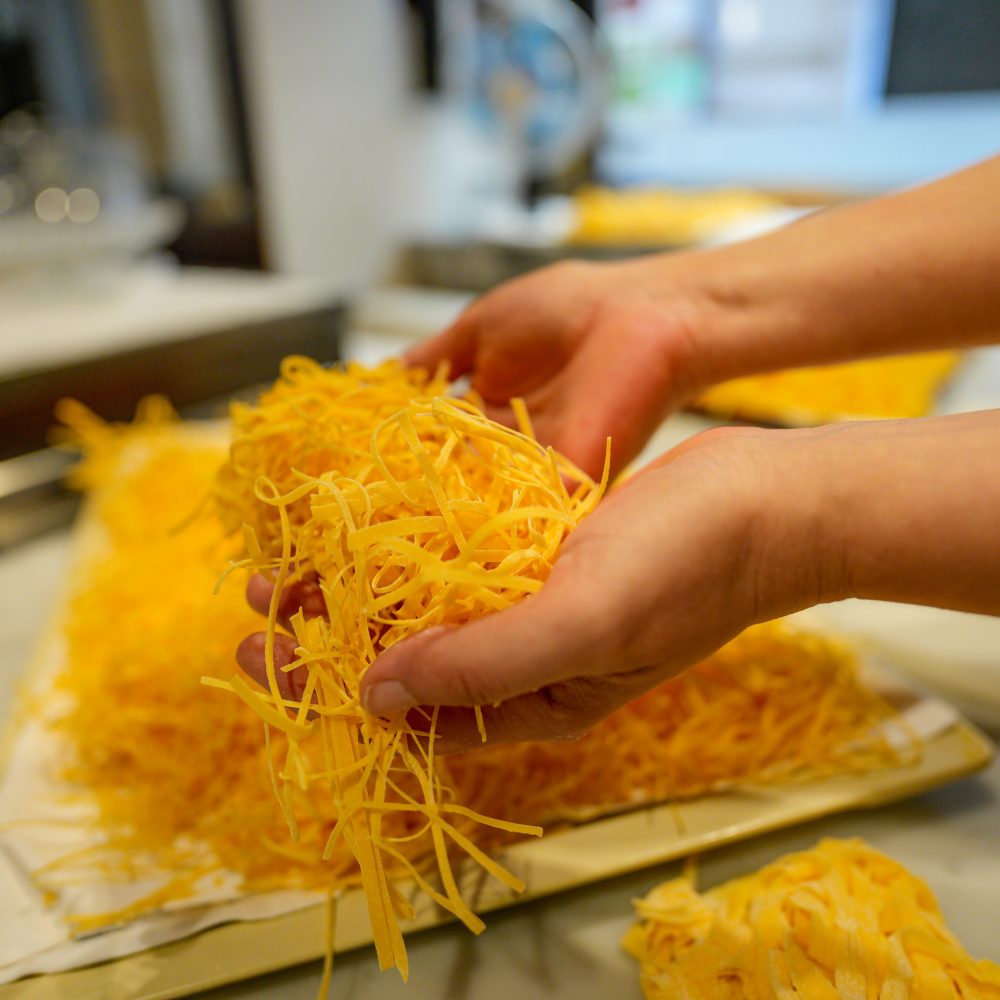
Finally, bronze dies leave some flour on the surface of the dried pasta, which also helps make the cooking water starchier. (When speaking with my local Rome guide, Arianna Pasquini, she pointed out that although Italians may not have invented pasta per se, the genius of Italian pasta is about perfecting the drying process, which results in the best pastas with the best texture.) So now we had science on our side; better pastas release more starch.
In prior versions of this recipe, we were concerned that the quality and age of the cheese—pecorino and Parmesan—might affect the creaminess and stability of the sauce. The good news is that our low-water skillet method, plus high-quality pasta, solved this problem. Even with run-of-the-mill cheese, the sauce was smooth and luscious. However, the fineness of the grate was important—you want the finest possible texture to expedite melting. The big surprise was that pre-grated supermarket cheese worked just fine. (Be sure to get a high-quality brand.) We also mixed Parmesan and pecorino for optimal flavor, as many chefs did in Rome.
As for the peppercorns, this is one area where many recipes come up short. (And it’s important—after all, pepper is in the title.) We toasted 1 tablespoon of whole peppercorns and then ground them in either a small coffee grinder or a mortar and pestle. We added ½ teaspoon each salt and pepper at the outset of cooking, along with 2 tablespoons of the cheese mixture, which helped flavor the pasta and provided a nice base of cheesy water for the finished dish.
So, the final recipe begins with 12 ounces of pasta placed into a large nonstick skillet with 4½ cups of water, 2 tablespoons of cheese and ½ teaspoon of the toasted, ground peppercorns. Cook over medium-high, tossing occasionally, until the pasta is just shy of al dente and most of the water has been absorbed—you should have no more than 1 cup of liquid. Now add the cheese mixture in three batches, tossing the pasta constantly. Add more water if necessary to finish cooking the pasta and melting the cheese. You want some sauce with the pasta, but not too much—this is not Alfredo or carbonara. Off heat, add 1 teaspoon of the remaining pepper and let sit for 2 minutes so that the sauce “tightens” a bit more. The good news is that this cacio e pepe will not turn gluey quickly, as is the case with many other recipes.
One last thought about cacio e pepe. Beramendi pointed out that Italians care more about the pasta than the sauce. They love pasta that tastes like a good artisanal bread. That is why they want a pasta that remains a tad chewy after cooking and has good flavor, and it’s why they want the pasta to stand up to the sauce, not be drowned in it. A good cacio e pepe has just enough sauce to coat the pasta but not so much that the taste of the pasta itself gets lost.
So, in the end, we had learned a lot about Italian pasta. Brand matters, not just for taste and chew, but for the starchiness of the water. Second, never over-sauce your pasta—Italians say that pasta dishes are first and foremost about pasta. And, finally, using a smaller amount of cooking water is a good kitchen hack when you want to create a smooth, creamy sauce that will cling to the pasta, and by all means, feel free to cook the pasta in a skillet.
As Fellini said, “Life is a combination of magic and pasta.” We agree.
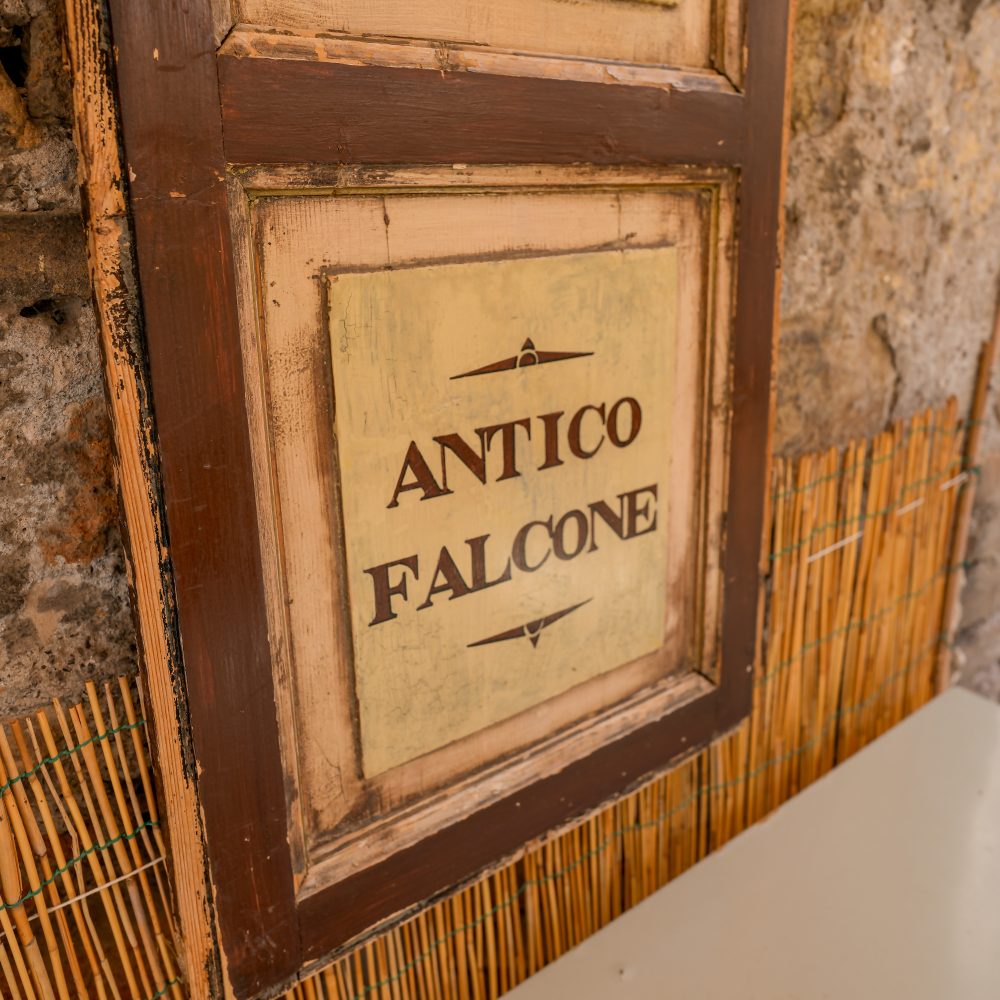
Cacio e Pepe
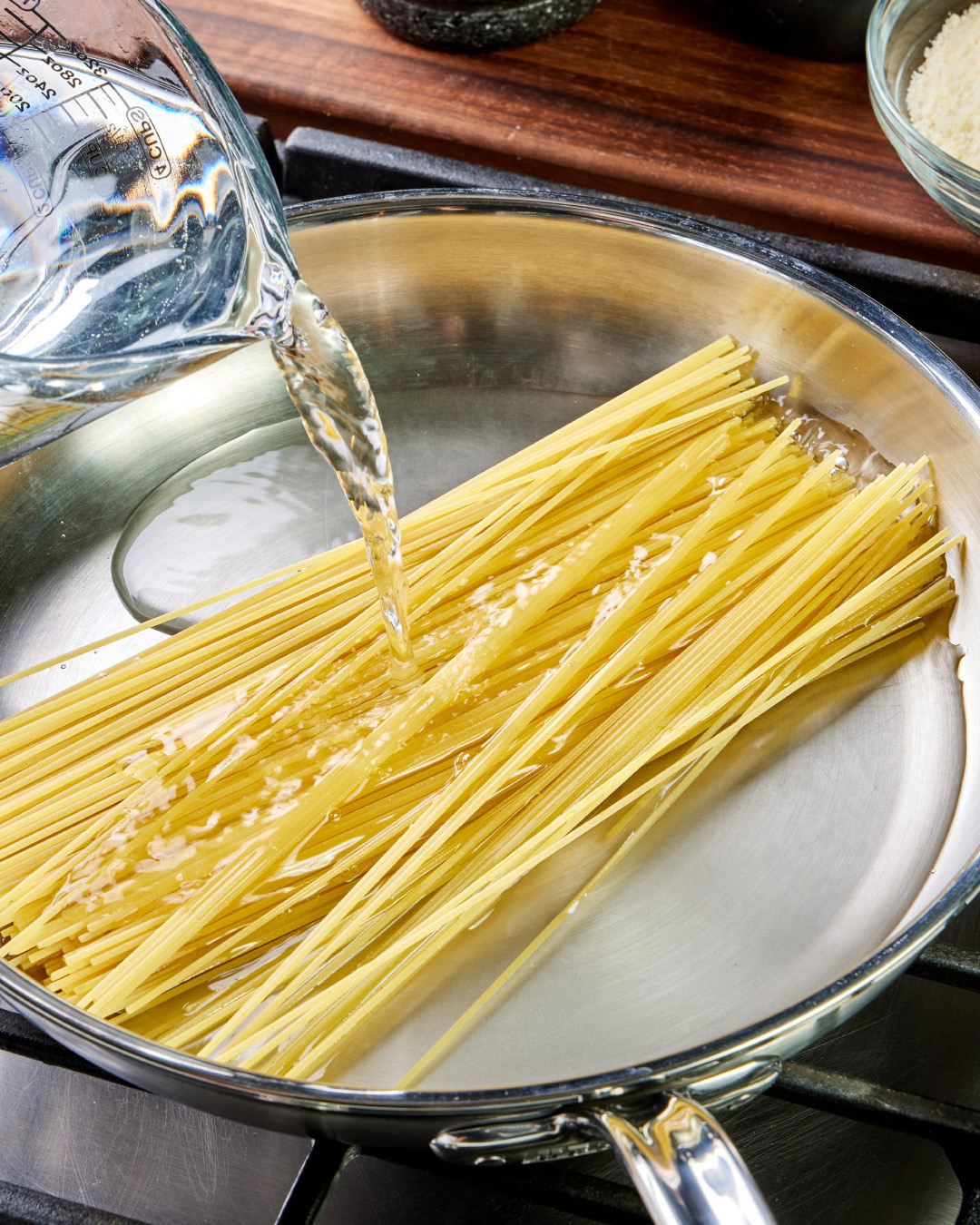
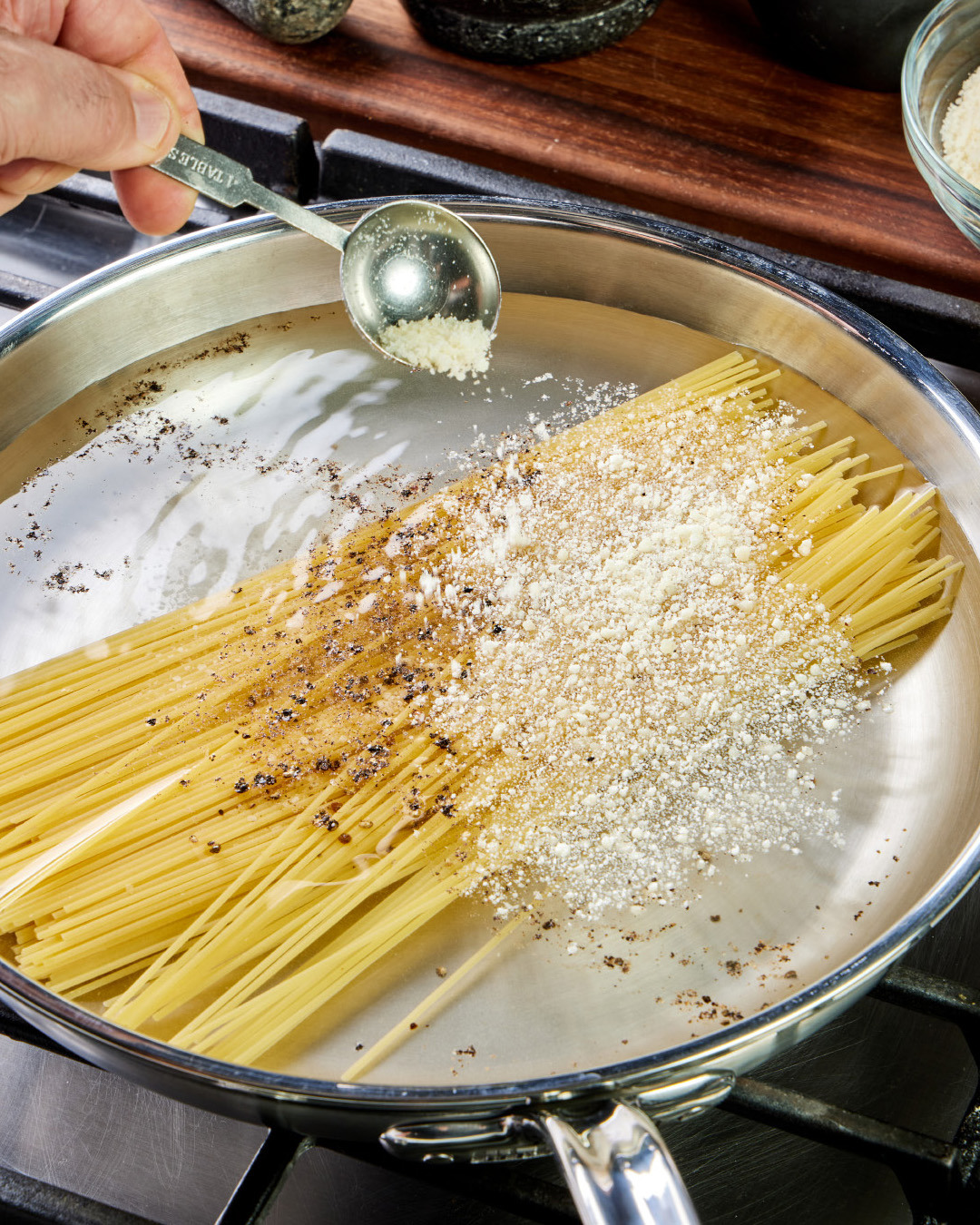
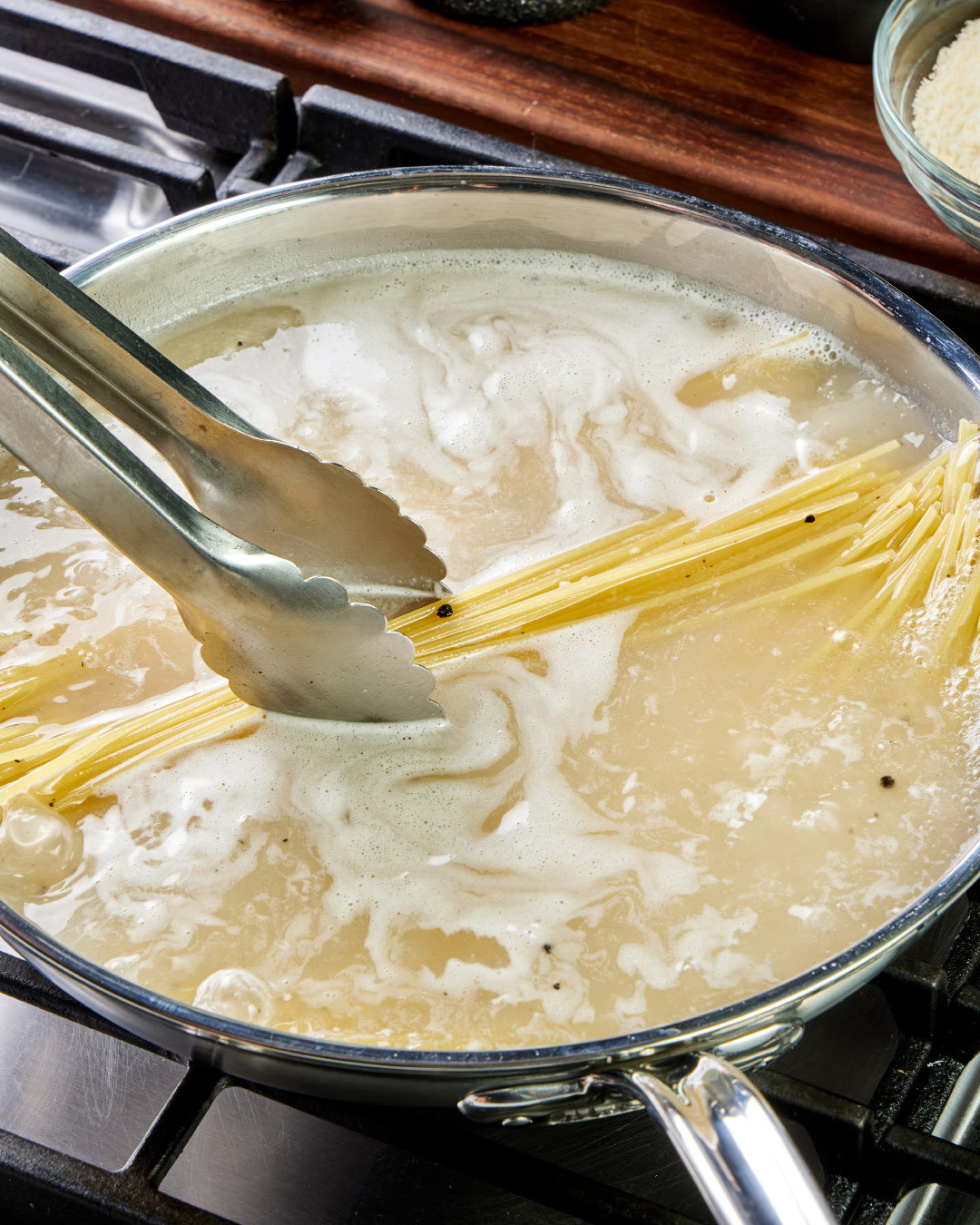
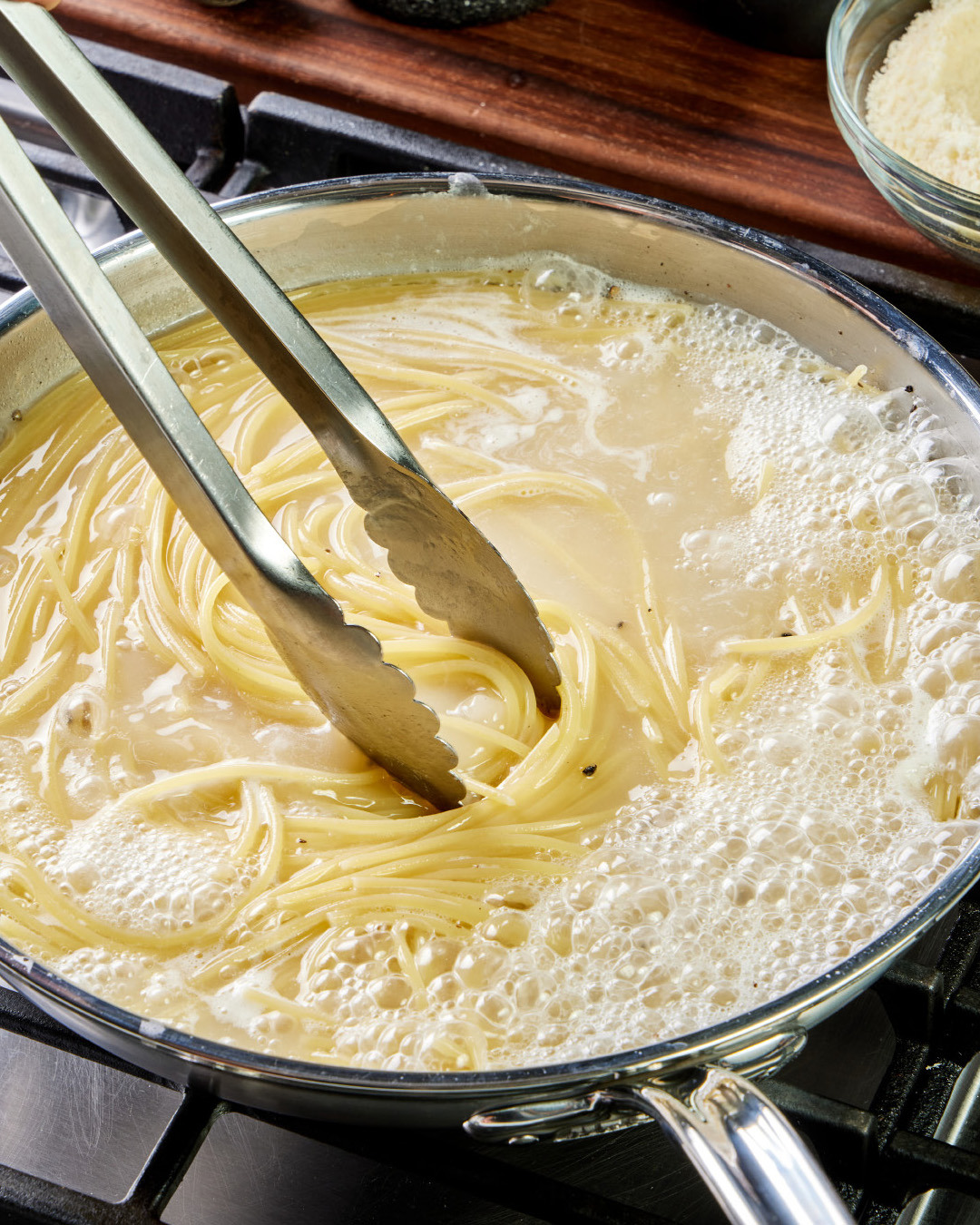
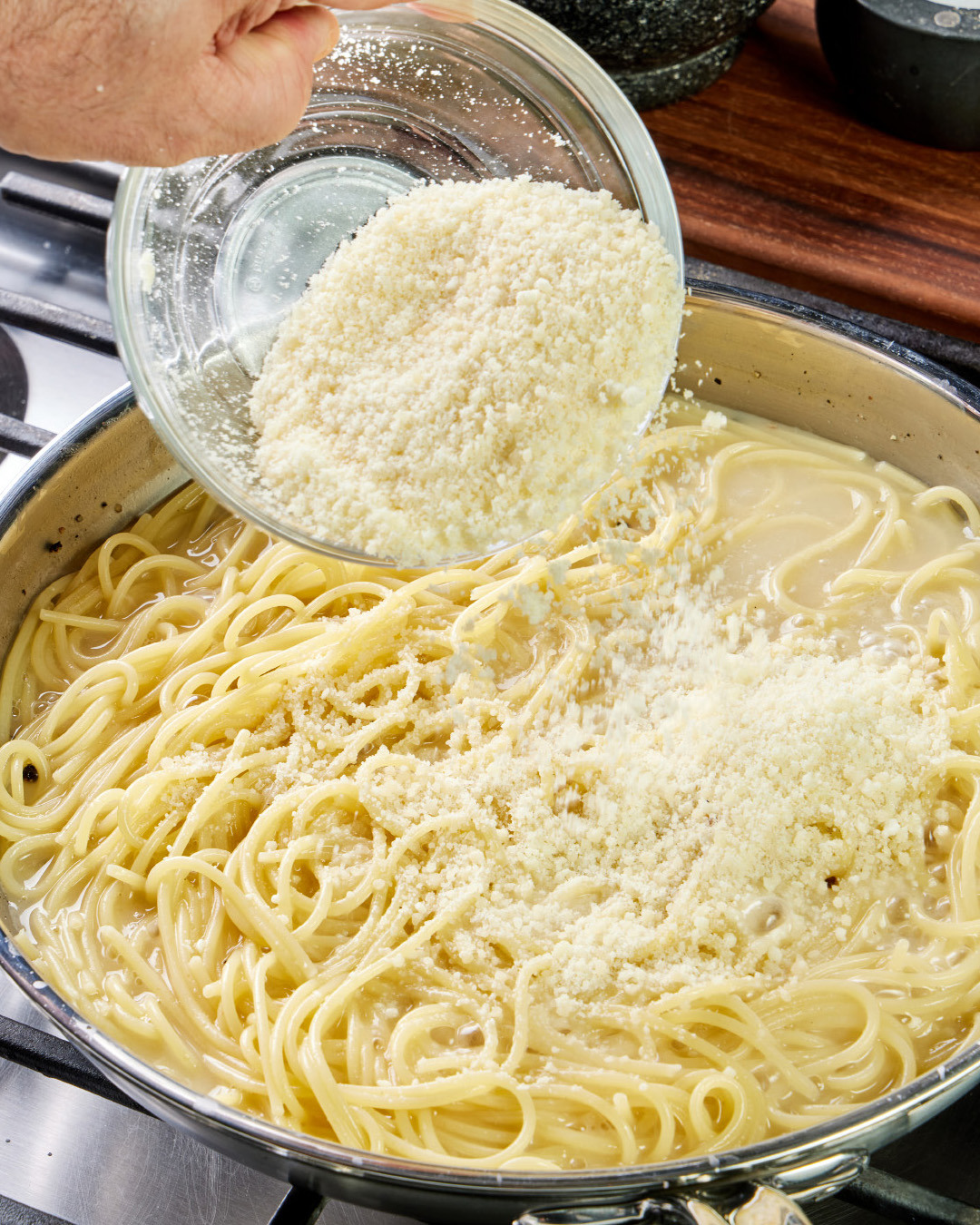
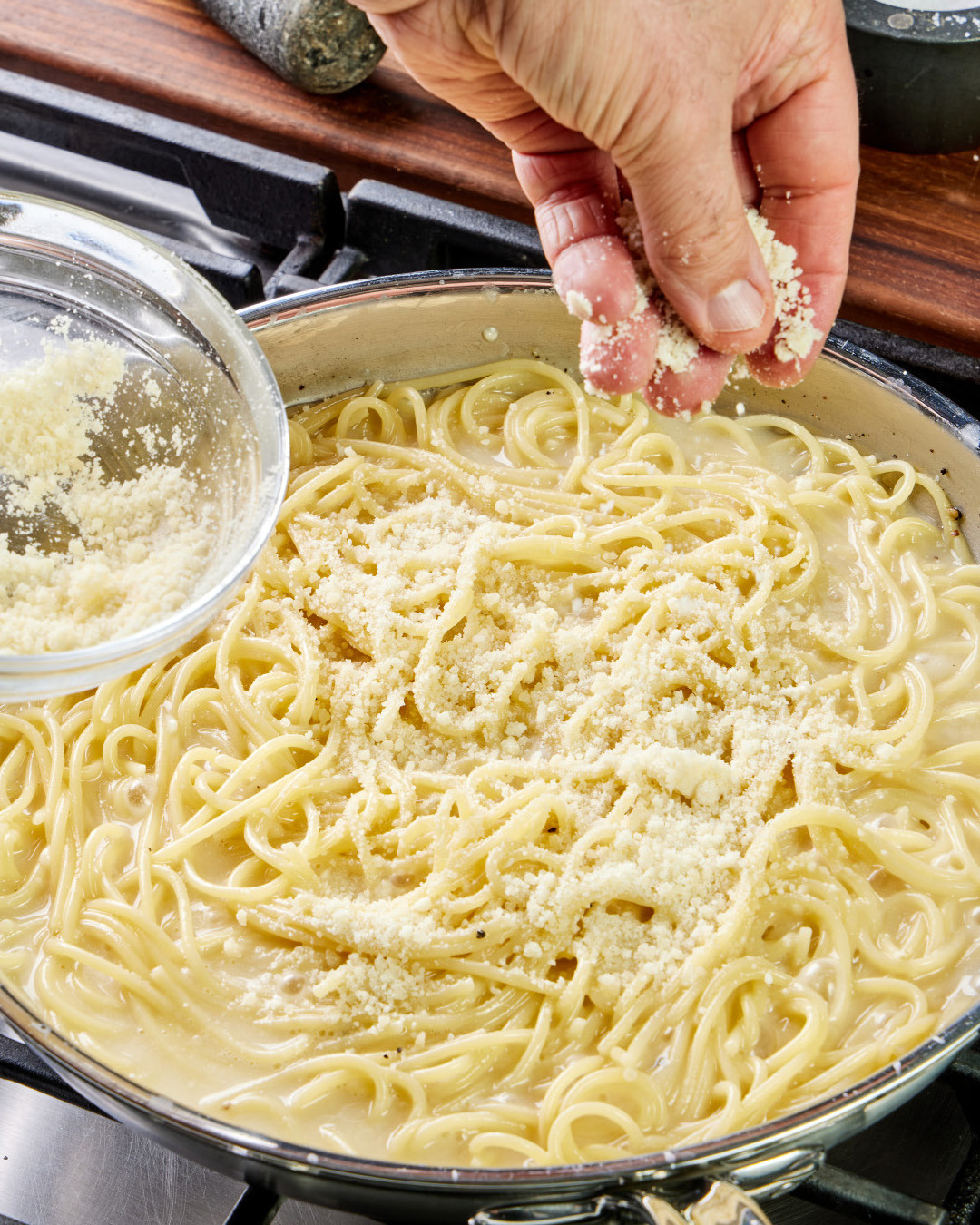
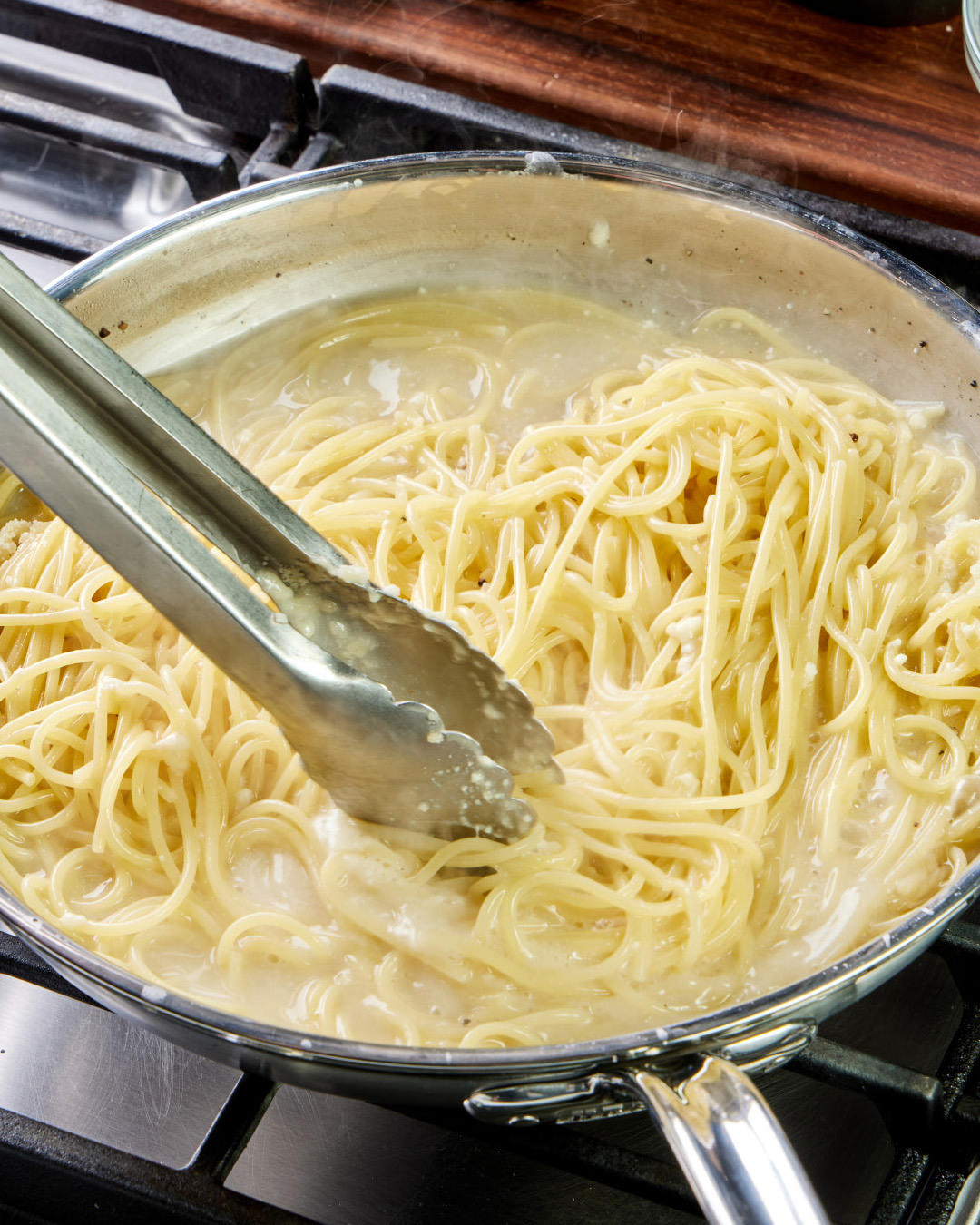
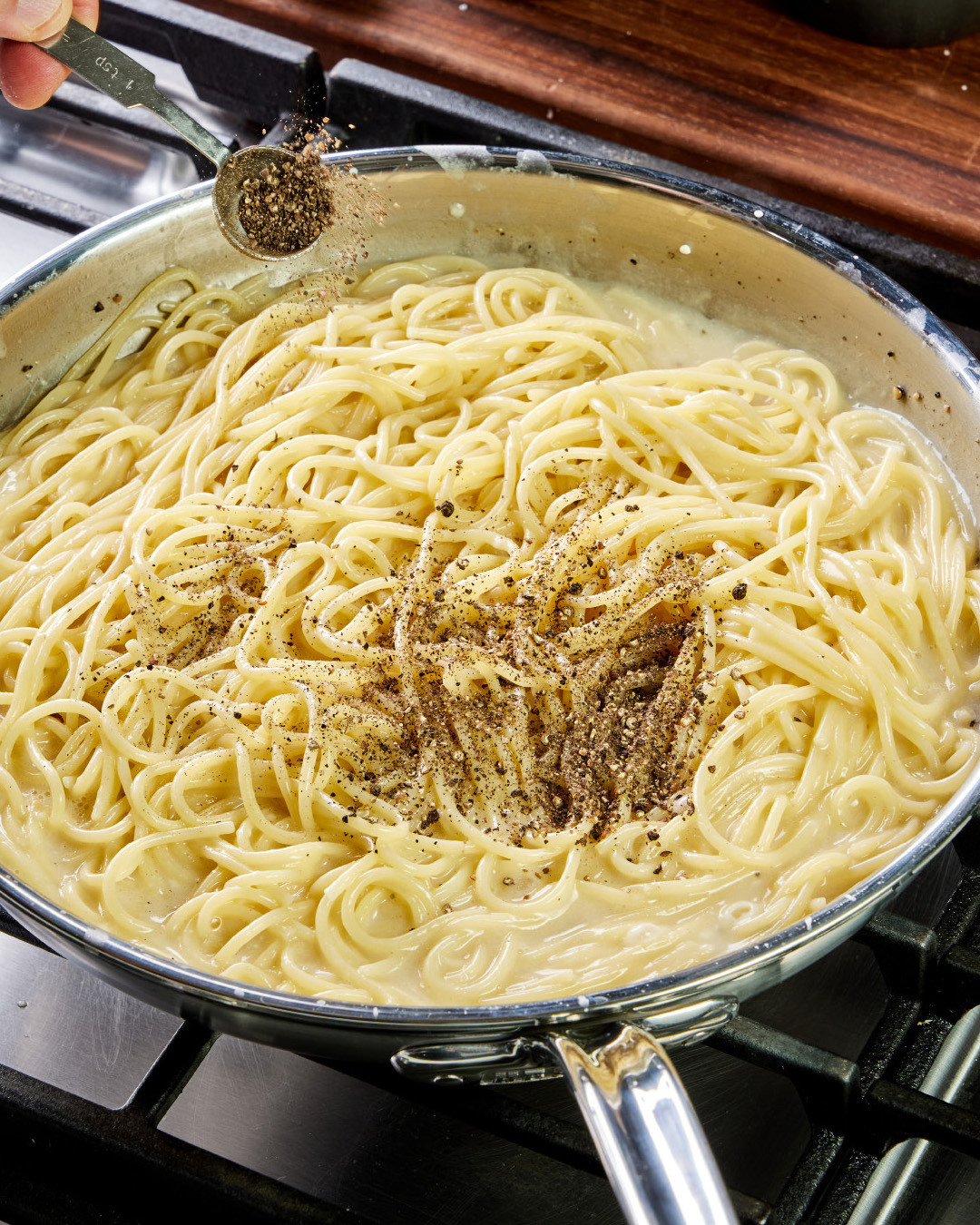
Does Pasta Brand Matter?
Halfway through our testing, we discovered that the brand of pasta, and how it is made, affects the starch level in the sauce and how well pasta absorbs sauce during cooking. We tested eight different brands, many of them supermarket brands, and the results were consistent. The pastas extruded through a bronze die outperformed the cheaper pastas that are pushed through a Teflon die. The reason? A bronze die creates a rougher exterior, better for starch release and sauce cling, whereas a Teflon die creates a smooth outer surface. (You can feel the difference; cheap pasta will feel like hard plastic on the outside, and a better brand will be noticeably rough.) In addition, manufacturers using the Teflon method tend to dry the pasta more quickly and at higher temperatures, which “anneals” the pasta, increasing starch retention and making absorption of sauce less likely. The top winners were DeCecco, Rustichella d’Abruzzo, Rummo and Rao’s. The middle-tier bronze-die pastas were Prince and Barilla al Bronzo. The Teflon die pastas, Barilla and Pastene, did not absorb much sauce, and the sauce was thinner due to less starch release.
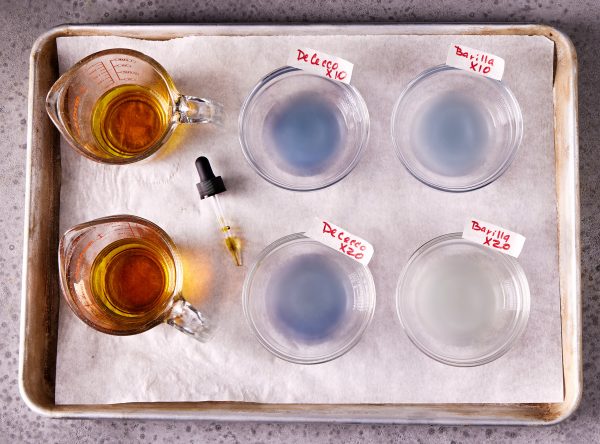
We compared cooking water from DeCecco and Barilla. The former uses a bronze die for extrusion and the latter, a cheaper brand, uses Teflon. We used an iodine test (which turns water blue in the presence of starch) to determine relative starch content. The DeCecco water is a darker blue, indicating higher starch content.
Related Recipes
March - April 2024

Sign up to receive texts
Successfully signed up to receive texts!
We'll only send our very best offers - Like a $15 store credit to start.
By entering your phone number and submitting this form, you consent to receive marketing text messages (such as promotion codes and cart reminders) from Christopher Kimball's Milk Street at the number provided, including messages sent by autodialer. Consent is not a condition of any purchase. Message and data rates may apply. Message frequency varies. You can unsubscribe at any time by replying STOP or clicking the unsubscribe link (where available) in one of our messages. View our Privacy Policy and Terms of Service.
